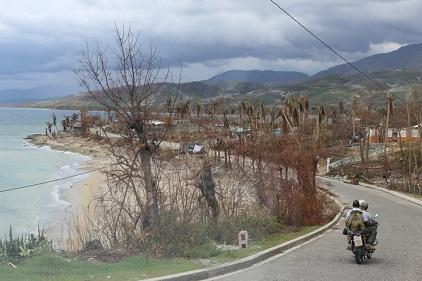
Part of the Haitian coastline in the wake of Hurricane Matthew. (Photo: UNOCHA/Stefania Trassari)
By Robert Glasser
Geneva, 20 September 2017 - Two years ago this month, Tropical Storm Erika, dumped an enormous quantity of rain on the small island of Dominica in the Caribbean.
The night-time event took the country by surprise. There were 31 deaths, and, by one estimate, 200 landslides. The main airport was severely damaged.
The most long-lasting effect on Dominica’s 72,000 people was the estimated economic losses of US$ 500 million, roughly equivalent to its entire GDP for one year.
Tropical Storm Erika had wind speeds of 85 kilometres per hour and did not directly hit the island. By contrast, Hurricane Maria swept across it on Monday evening full of fury with wind speeds of 265 kilometres per hour and much rain.
Dominica Prime Minister Roosevelt Skerrit, who had to be rescued by police from his flooded and roofless home on Tuesday, fears the worse now in terms of injury and possible loss of life.
Following what he vividly described as “an avalanche of torn-away roofs,” the economic cost of recovery and building back better would be ruinous without international assistance.
This is the reality facing many communities living in exposed Small Island Developing States (SIDS) from the Caribbean to the Pacific Ocean to the Indian Ocean. The forced abandonment of Barbuda in the Caribbean following Hurricane Irma, after 300 years of continuous human occupation, is a cruel reminder of the vulnerability of these low-lying outposts of civilisation.
Development can never be sustainable if it is at continual risk of being destroyed by disasters.